Anxiety impacts millions globally. Many people seek relief beyond regular medications. Feeling overwhelmed, stressed, or on edge? You're not alone. Many are seeking natural ways to calm their minds and bodies.
Cupping therapy is an old healing method. It uses special cups placed on your skin to create a light suction. This technique may seem strange if you're new to it, but it has helped people feel better for thousands of years. More people are now finding that cupping therapy helps with anxiety and stress.
More people are interested in holistic and alternative treatments for mental health. They want options that can work with or even replace medications. Some people have side effects from anxiety meds. Others like to try natural methods first. The good news is that cupping can complement your current anxiety treatment plan.
Why do people consider cupping for anxiety and stress relief? Anxiety often appears in your body. You might feel muscle tension, headaches, tight shoulders, and overall discomfort. When your body feels tense, your mind often feels tense too. Cupping therapy helps relax your muscles. It improves blood flow and may also calm your nervous system.
What Is Cupping Therapy?
Cupping therapy begins with its origins and how it works. This isn't just a trendy treatment. It comes from traditional healing systems that have helped people for centuries.
Origins and Historical Background
Origins go back over 3,000 years to traditional Chinese and Middle Eastern medicine. Ancient healers in China, Egypt, and the Middle East employed cupping to treat a wide range of health issues. They addressed problems like anxiety and stress symptoms. They believed that many health problems stemmed from blocked energy or poor blood flow. Cupping helped get things moving again.
How Cupping Therapy Works
How cupping works involves placing special cups on your skin to create suction. This gentle pull increases blood flow and relaxes tight muscles. Tradition says it also balances your energy. It's like giving your muscles and circulation a gentle boost. This helps everything work better.
Different Types of Cupping
There are different types you might encounter. Dry cupping uses suction without breaking the skin and is the most common type for stress relief. Wet cupping, also known as Hijama, involves making minor cuts to release blood. Some people think this helps remove toxins and balance energy. Fire cupping is a traditional method that uses heat to create suction. Many people find it very calming. Modern options include silicone cups. They offer gentler suction and are easier to use.
How Cupping Therapy Relates to Anxiety
Cupping can help relieve anxiety by showing how your mind and body connect. When you're anxious, your body reacts physically. Cupping helps with these physical symptoms.
Understanding the Mind-Body Connection
The mind-body connection shows that stress in your body can increase anxiety. But when you relax physically, it can help calm your mind. When you feel worried or stressed, your muscles tend to tighten. This is common in your neck, shoulders, and back. This tension sends signals to your brain that something is wrong. As a result, it can raise feelings of anxiety. Mental stress leads to physical tension, and that tension increases mental stress.
Cupping's Impact on Stress Hormones
Cupping may lower cortisol levels and promote relaxation. Research is ongoing, but early studies show promising links. Cortisol is your primary stress hormone. When its levels stay high for too long, you feel anxious and on edge. Some studies suggest that cupping therapy can reduce stress and lower cortisol levels. However, more research is needed to understand this link fully.
Effects on the Nervous System
The nervous system and emotional well-being can be affected in various ways. Cupping creates gentle suction and boosts blood flow. This may activate your parasympathetic nervous system. This system controls the "rest and digest" response, helping you feel calm and relaxed. When this system works well, your heart rate slows. Your breathing gets deeper, and your mind feels calm.
Types of Cupping Therapy for Anxiety
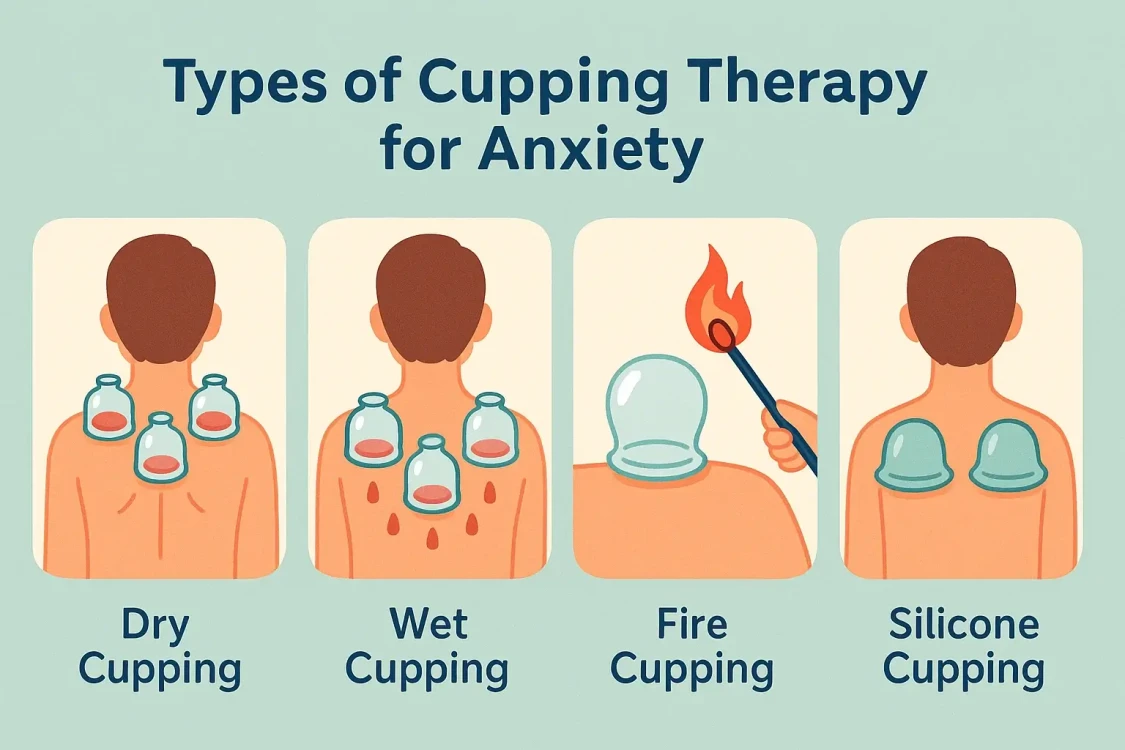
Different types of cupping can help relieve anxiety. Knowing your options helps you find what works best for you.
Dry Cupping for Relaxation
Dry cupping uses suction without cuts. It's often used for relaxation and managing anxiety. The practitioner puts cups on certain spots, like your back, shoulders, or neck. They then create a gentle suction. This type is excellent for beginners and anyone nervous about trying cupping. Many people find dry cupping soothing. They often feel more relaxed during and after sessions.
Wet Cupping (Hijama) for Energy Balance
Wet cupping, also known as Hijama, involves the use of suction and controlled blood release. It aims to balance energy and remove toxins from the body. This method involves making tiny, shallow cuts in the skin before applying the cups. While this might sound scary, the cuts are tiny and the process is generally not painful. Some practitioners believe this approach is practical for deep stress and anxiety that builds up over time.
Fire Cupping for Stress Relief
Fire cupping uses heat to create suction. Many people find it calming for stress and anxiety. A flame is briefly placed inside the cup to heat the air, then quickly removed before placing the cup on the skin. As the air cools, it creates suction. The warmth from this process is comforting and relaxing. It feels like a warm bath that helps you unwind when you're stressed.
Modern Silicone Cupping
Modern silicone cupping offers softer suction. It's often used for stress relief and muscle relaxation. These cups are easy to handle. You can adjust them for comfort. This makes them popular with those who want to try cupping but worry about the intensity. They're easier to carry, so some practitioners use them for quick sessions to ease anxiety.
Choosing the Best Type for Anxiety
For treating anxiety, most practitioners suggest starting with dry cupping. It's gentle, safe, and effective for stress relief. The best choice depends on your comfort level, symptoms, and your practitioner's recommendations.
Benefits of Cupping Therapy for Anxiety
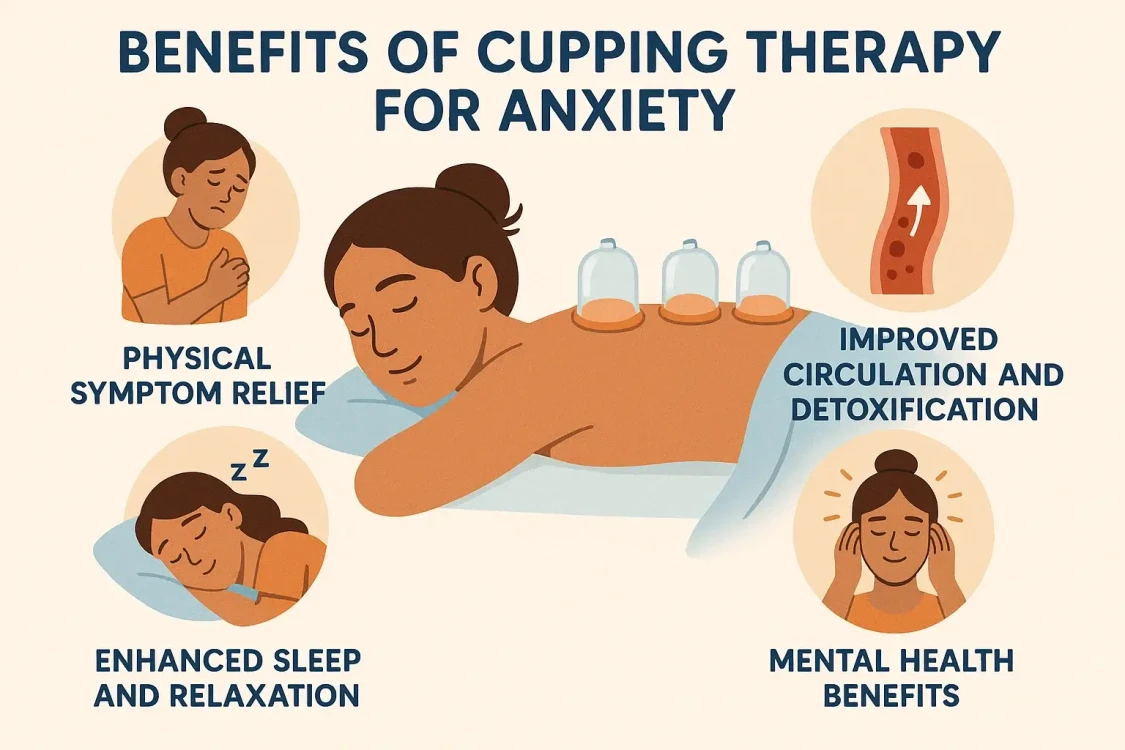
Cupping therapy helps relieve anxiety in several ways. It targets both the physical symptoms of stress and the root causes of anxious feelings.
Physical Symptom Relief
Many people first notice relief from muscle tension and physical stress symptoms. When you're anxious, your body tends to hold tension in specific areas. This is especially true for your shoulders, neck, and upper back. Chronic muscle tightness can lead to headaches. It can also make sleep difficult and leave you feeling on edge. Cupping releases physical tension. This often brings immediate relief and relaxation.
Improved Circulation and Detoxification
Improved blood circulation and detoxification support your body's natural ability to handle stress. Better blood flow gives your muscles more oxygen and nutrients. It also helps remove waste products more efficiently. Some practitioners believe that cupping helps remove toxins that accumulate during chronic stress. However, more scientific research is needed to confirm these detox claims.
Enhanced Sleep and Relaxation
Cupping therapy often leads to better sleep quality and enhanced relaxation. Many people say they sleep better after cupping. Better sleep helps manage anxiety. When you get enough sleep, you can better handle daily stress. You also feel less overwhelmed by life's challenges.
Mental Health Benefits
The mental health benefits of cupping therapy extend beyond just physical relaxation. Regular sessions can be a special time for self-care and stress relief. This is key for managing anxiety over the long run. Taking time for yourself is crucial. Doing healing activities shows your mind that you matter.
Complementary Treatment Support
Cupping can support other anxiety treatments you may be using. Cupping can enhance your medication, therapy, or meditation practices. It works well with them, but it doesn't replace them. Cupping therapy and meditation together can help you relax and reduce anxiety. Many people discover that this combination enhances their overall experience.
What to Expect in a Cupping Therapy Session
Understanding a cupping session can ease any anxiety you might feel about trying it. The process is generally relaxing and straightforward.
Pre-Session Preparation
Before the session, you usually chat briefly with your practitioner. Tell us about your anxiety symptoms, stress levels, and any health issues we should know. You'll often need to take off your shirt or wear a loose top. This makes it easy to access your back and shoulders. The practitioner will explain the process and answer any questions you have.
During the Treatment Session
The therapy begins with the practitioner checking your skin. They then decide where to place the cups based on your needs. They'll clean the spots for the cups. They will use cups in one of these ways: fire cupping, manual suction, or electric pumps. Once the cups are set, lie still for 10-20 minutes. This lets the suction work on your muscles and circulation.
Sensations and Physical Response
You may feel warmth, a gentle pull from the suction, and sometimes a slight tingling. This tingling happens as blood flow increases to the area. Most people find these sensations pleasant and relaxing rather than uncomfortable. You might see mild marks on your skin after removing the cups. These are normal and usually fade within a few days to a week.
Session Length and Frequency
The length and number of anxiety management sessions depend on your needs and how you respond to treatment. Initial sessions usually last 30 to 45 minutes total, including consultation time. For anxiety relief, many experts recommend weekly sessions for four to six weeks. After that, you can space them out based on how you feel. Some people find monthly maintenance sessions helpful. Others like more frequent treatments when times get tough.
Post-Session Care
What to expect in a cupping session for anxiety also includes a period of rest after the cups are removed. Many experts suggest you drink water. They also advise avoiding heavy activity for the rest of the day. Finally, keep an eye on how you feel in the next few days.
Safety, Risks, and Considerations
Knowing the safety aspects of cupping therapy helps you make wise choices. It ensures you receive treatment safely and effectively.
Who Should Avoid Cupping Therapy
Individuals with certain medical conditions should avoid cupping therapy. It can be risky for them. Avoid cupping if you are pregnant, have a bleeding disorder, or take blood thinners. Also, steer clear if you have severe heart disease or active skin infections where the cups would go. Always consult your doctor first. Individuals with very thin or fragile skin should also exercise caution.
Safety for Anxiety and Panic Disorders
Cupping for anxiety and panic attacks is a common worry. For most people, it is generally safe when performed by a qualified practitioner. If you have severe panic attacks or claustrophobia, talk to your practitioner first. They can change the treatment to help you feel better or suggest different options.
Common Side Effects
Possible side effects are generally mild and temporary.
The most common side effects of cupping therapy for anxiety patients are:
- Circular marks on the skin from the cups
- Mild soreness in the treated areas
- Slight dizziness occurs after treatment from time to time.
These effects typically resolve within a few days and are not usually cause for concern.
Importance of Qualified Practitioners
The importance of going to a licensed and experienced practitioner cannot be overstated. Proper training helps the practitioner perform cupping safely. They learn to identify when it's not suitable for someone. They also understand how to combine it with other treatments. Find certified cupping therapy practitioners. They should have experience helping people with anxiety.
Understanding Cupping Marks
Cupping marks can worry those new to this therapy. Many wonder what these marks mean in anxiety treatment. These marks are caused by increased blood flow to the area and are not bruises in the traditional sense. Traditional cupping theory says that the color and darkness of the marks show energy blockages and circulation problems. However, there is limited scientific evidence to support these claims.
Cupping Therapy vs. Other Anxiety Treatments

Knowing how cupping stacks up against other anxiety treatments can show its place in your mental health plan.
Comparison with Traditional Treatments
Traditional treatments, such as medication and cognitive behavioral therapy, have similarities but also key differences. Anxiety medications change brain chemistry to ease symptoms. CBT helps you shift thought patterns and behaviors that lead to anxiety. Cupping therapy and acupuncture can reduce anxiety. They do this by boosting energy flow and circulation, cupping targets larger muscle areas. Acupuncture focuses on specific points.
Integration with Other Therapies
Cupping works best when combined with therapy, mindfulness, or lifestyle changes. Cupping often boosts the benefits of other treatments. It doesn't compete with them; it enhances them. Many people notice this improvement. Many people feel more relaxed and open in therapy after cupping treatments. Anxiety management can benefit from cupping therapy and yoga. Both methods emphasize the mind-body connection, making them effective together.
Effectiveness and Added Benefits
Does cupping therapy help with anxiety and stress beyond what other treatments provide? The answer is different for everyone. Many people say that cupping helps with the physical side of anxiety. This can be more effective than talk therapy or medication. If you feel a lot of physical tension, muscle pain, or sleep problems from anxiety, cupping might help. It can help with these issues as your other treatments target mental and emotional health.
Research and Evidence
Research on cupping for anxiety is still growing, but early studies show promise. Some research suggests that cupping may help reduce anxiety symptoms and improve overall well-being. However, we need larger and more thorough studies to confirm this. Traditional Chinese cupping therapy for anxiety has a long history of support. Many people have used it for thousands of years. Now, modern research is beginning to explore how it works scientifically.
Holistic Treatment Approaches
The best holistic anxiety treatments, including cupping, often involve combining several approaches. Many people find success by incorporating cupping, exercising regularly, meditating, getting sufficient sleep, and seeking professional counselling when needed.
Conclusion
Cupping therapy provides a special way to manage anxiety. It targets both the body and mind to help with stress. Cupping isn't a cure-all, but many people feel more relaxed after regular sessions. They often sleep better and handle daily stress more easily.
Benefits include:
- Relief from muscle tension
- Improved circulation
- Better sleep
- A greater sense of well-being
Cupping therapy offers natural anxiety relief for those seeking holistic options. It can be a good choice alongside or even in place of traditional treatments.
Cupping can help, but it should support professional mental health care, not replace it. If you struggle with severe anxiety, depression, or other mental health problems, see a qualified healthcare provider. At Gendrics, we support better mental health. We share evidence-based information to help people make informed choices about treatment options.
Cupping therapy calms the nervous system and releases tension. This makes it a valuable part of managing anxiety. Cupping therapy could be the relaxation and stress relief you need. Consider extra support with therapy and medication. If you're trying natural options for the first time, it's worth exploring.
Before starting any new treatment, like cupping therapy, talk to your healthcare provider. This way, you can ensure it's right for you and won't clash with other treatments you're getting.

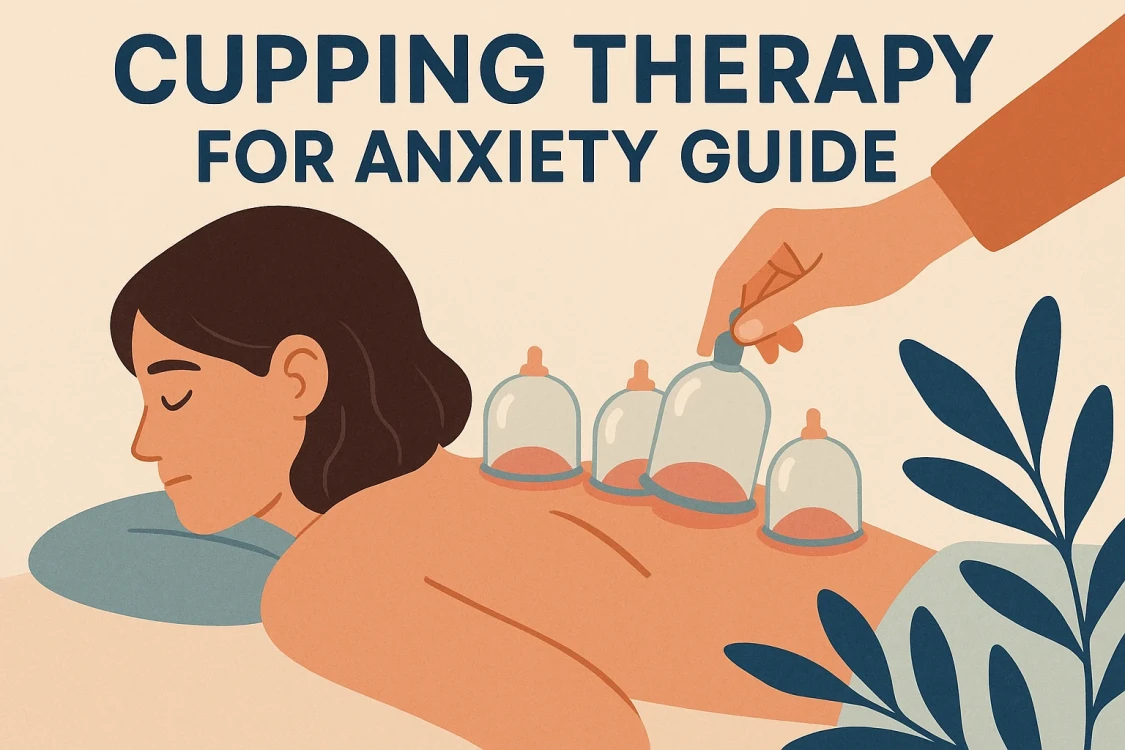
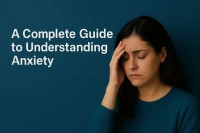
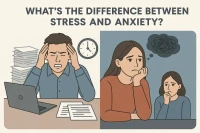
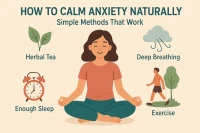
Comments